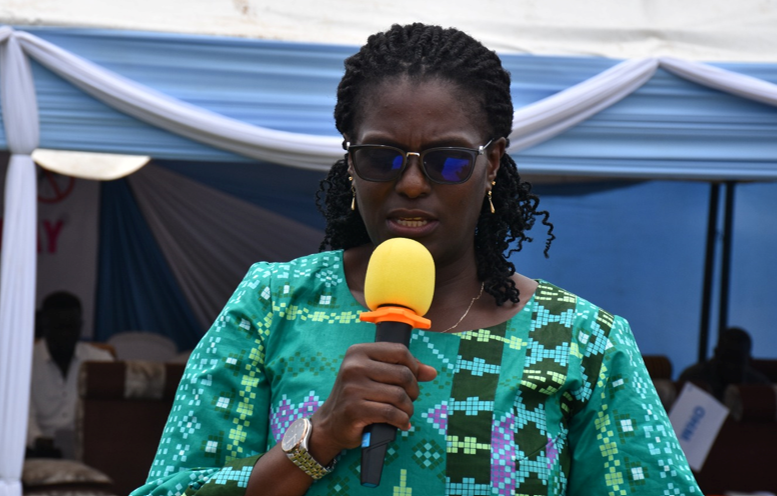How South Sudan can escape downward GDP growth trajectory projected by IMF

In the just concluded International Monetary Fund (IMF) and World Bank’s World Economic Outlook for April 2023, South Sudan’s economy was projected to grow by 5.6 per cent, 4.6 per cent and 4.4 per cent in 2023, 2024, and 2028, respectively.
That means our economy is expected to suffer a blip over the next five years. The fund also predicted that South Sudan’s economy would achieve a higher growth rate in 2023 than three of the seven East African economies.
But it will be leapfrogged by all six East African economies over the next four years. The anemic economic expansion must be at the top of the agenda at the forthcoming national economic conference because only economic growth could solve most of our problems— inflation, unemployment, and poverty alleviation.
In principle, growth projections from international bodies like the IMF may never happen as predicted due to the fact that there are some positive shocks that may not be captured well in the projection model. The fund prediction was always aimed at informing local discussion.
So this article intends to stimulate the local debate on what South Sudanese leaders can do in the medium term to prove the IMF projection wrong. This country has huge growth potential. Therefore, if we can put our house in order and utilise all the available resources, we can be assured of prosperity.
In my opinion, the IMF projection did not catch me by surprise due to various reasons, which I will discuss in a moment. The IMF Africa regional economic press release for sub-Saharan Africa was entitled, “The Big Funding Squeeze.”. The country is facing a funding crisis due to the fact that interest rates have gone up across the world, making it difficult for our government to access foreign capital markets.
It is also very unfortunate that the country is unable to mobilise domestic resources as a result of low investor confidence attributed to the government’s inability to honour its debt obligations. Not so long ago, the government issued a treasury bill to the public, which it later defaulted on, forcing the Bank of South Sudan to step up and pay the loan on behalf of the government.
The government should now go back to the drawing board and come up with a well-planned, well-conceived, and robust financial market where people with excess cash can invest and those with deficits, including the government, can also access funding at an affordable rate. This will ease the funding squeeze we face today and in future.
Another trend we could see is that of fiscal space, which is limited by the fact that some crude oils have been advanced up to 2028. This is according to the document signed by the former minister of finance and economic planning, Hon. Salvatore Garang, in which he spread the sheet up to 2028. This will make it difficult for the government to fund some of the critical projects which could spur growth. The only option for government is to leverage domestic resource mobilisation by addressing loophole in tax collection and also faithfully implementing the public finance reform.
Another issue that may explain the lower growth projection is the uncertain political environment in the country. Nobody can predict with certainty that the country will hold its first democratic election in 2025 since independence in 2011, and if at all, there will be an election in 2024, what will the post elections look like? I am not a political scientist to accurately predict what is going to happen beyond 2025, but as an economist, I only see foggy snow on the horizon. All these uncertainties may explain the lower growth prediction.
Political instability in South Sudan has always had far-reaching consequences for human life since it always comes with disruptions in agriculture, which roughly 80 per cent of the population depends on for livelihood.
The ball is in the political leaders’ court, whose role is very critical in proving the IMF projection null and void. The political will to implement the roadmap in letter and spirit will be highly appreciated by the people of South Sudan.
The African Development Bank reported that oil accounted for 80 per cent of the industry sector’s value added during 2012–2020 and over 95 per cent of total government revenue and export earnings. That means oil drives our growth, and a decline in oil prices will lead to a lower growth rate. We had a growth rate of 6.6 per cent in 2022, which was largely driven by an increase in global oil prices.
Without oil, we would not have not achieved that growth rate which was unevenly shared. There is no single minister or policymaker who can beat his/her chest that he/she has designed an economic policy that can or may support economic growth. Our economy grows in spite of what our policymakers do, thanks to elevated oil prices.
Unfortunately, oil prices are expected to decline going forwards, and that will have negative influence on the growth rate. The IMF predicted the average price between $ 73.13 a barrel in 2023 and $68.90 in 2024 respectively.
Proper utilization of oil resources could have the potential to prop up a broad-based economic growth and diversification, which may lift million out of poverty and unemployment. We also need to put in place policies that encourage investment. This country has a huge growth potential which should be growing at around 10 per cent per a year.
-Majok Deng is a South Sudanese economist and volunteer regular contributor to young economists’ network lectures series. He can be reached at Majokthon2014@gmail.com


